9.4 /10 1 Votes9.4
5/5 Emuparadise Engine SCI0 Developer Sierra Entertainment Publisher Sierra Entertainment | 4.3/5 My Abandonware Release date(s) NA: 1989 Initial release date 1990 | |||||||||||||||||||||||||||||||||
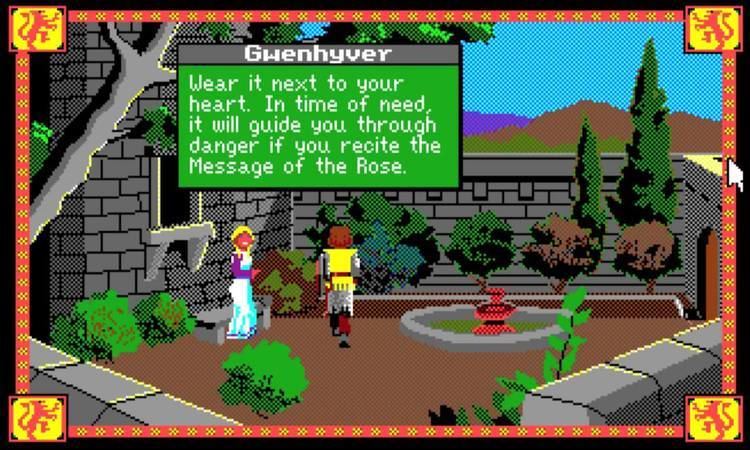 | ||||||||||||||||||||||||||||||||||
Genres Adventure game, Puzzle video game Similar Conquests of the Longbow, Codename: ICEMAN, Manhunter: New York, The Colonel's Bequest, Castle of Dr Brain | ||||||||||||||||||||||||||||||||||
Conquests of camelot part 1 13 intro
Conquests of Camelot: The Search for the Grail is a graphic adventure game released in 1989 by Sierra On-Line. It was the first game in the Conquests series designed by Christy Marx and her husband Peter Ledger. The only other game in the series was 1992's Conquests of the Longbow: The Legend of Robin Hood. Marx did the majority of the design work while Ledger created the game and package art.
Contents
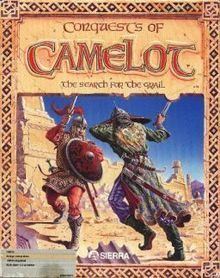
Gameplay
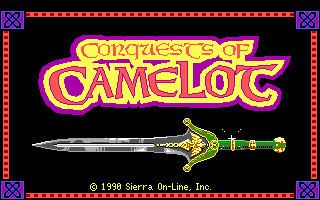
The gameplay is typical of the Sierra adventure games of that time, however it is enriched with several arcade sequences, puzzles and riddles. Occasionally, some alternative solutions to puzzles were available.
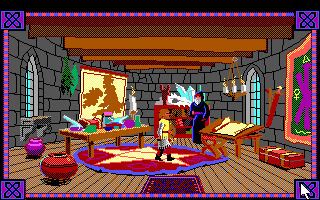
Scoring was based on three kinds of points: Skill (when the player performs deeds that help him in his quest, or defeats enemies), Wisdom (when examining things, talking to others, or gaining hints) and Soul (performing good deeds to help others). The options provided a difficulty setting for the arcade sequences, but with lower points. The game featured a soundtrack of authentic-sounding medieval music composed by Mark Seibert.
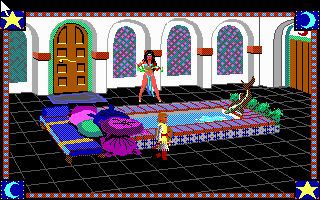
The message boxes (narration) are the wizard Merlin speaking and counseling the player. The in-game text displays lesser-known forms of words, for example Gwenhyver, Excaliber, Gawaine, Launcelot, and magick instead of the better-known Guinevere, Excalibur, Gawain, Lancelot, and magic. The parser, however, understood all spellings.
The package included a map of Europe in Arthurian times and an illustrated manual called Liber Ex Doctrina (Latin for either "Book (derived) from Knowledge" or "Book of Doctrine"). This book included information about the evolution of the Arthurian and Grail myths as well as Greek and Roman mythology; some of this information was required in order to answer riddles within the game.
Plot
The game begins at the decline of Camelot because of the love triangle between King Arthur, Guinevere and Lancelot. This 'curse' brought famine and drought in the kingdom. After having a vision of the Holy Grail covered by a silver cloth, Gawain, Lancelot and Galahad departed on a quest for the Holy Grail. However, they did not return. The player controls Arthur in his search for the missing knights and the Grail.
The adventure begins at Camelot and then the player travels across England. On his way to Glastonbury Tor he is challenged to a joust by a Black Knight before rescuing Gawain. In the ruins of the Tor he meets a mad hermit, a monk who serves the "Old Ones" and claims he has the Grail, left by Joseph of Arimathea. Afterwards, he visits Ot Moor where the frozen (due to the curse) Lady of the Lake challenges Arthur to a riddle in order to rescue the imprisoned Lancelot.
From Southampton, Arthur leaves England in order to follow Galahad's traces. He arrives to Gaza where he is hosted by a man called Al Sirat, who will introduce him to the cult of the Six Goddesses. At Jerusalem Arthur is tried throughout his acts of selflessness and helping people. After traversing a series of perilous Catacombs, the player reaches the ancient Temple of Aphrodite where the goddess directs him to the Grail.
Themes
A theme seen throughout the game is the intermediate period of Sub-Roman Britain before Christianity, as a new religion, replaces the old ones. In Camelot there is a Chapel dedicated both to Mithras (who is however represented by a labarum) for the soldiers of Roman heritage, and Jesus Christ for the Christian soldiers. Cernunnos, and Aphrodite are portrayed as real gods, but their powers and influence are in decline because of the advent of Christianity. In the ending sequence of the game, the Grail obliterates the purported "symbol of Mithras" in the chapel.
The Grail's power seems to be universal both as a Christian relic and an artifact (the cauldron) of feminine power of the Goddess in pagan folklore.
Another theme interwoven with the gameplay is that Arthur is supposed to make good deeds to prove himself worthy of the Grail. In the Jerusalem sequence the player has to discern the local's problems and help them in order to advance the game. If the player decides not to help even one of his knights, avoid thus the trials and arcade sequences, Arthur will reach the end, but the Grail will also kill Arthur at the very end of the game.
Reception
Computer Gaming World stated that Conquests of Camelot's EGA graphics were inferior to those of previous Sierra games, and did not recommend the game to more experienced adventurers because of its puzzles' low difficulty level. In 1990, Dragon gave the game 4½ out of 5 stars.
